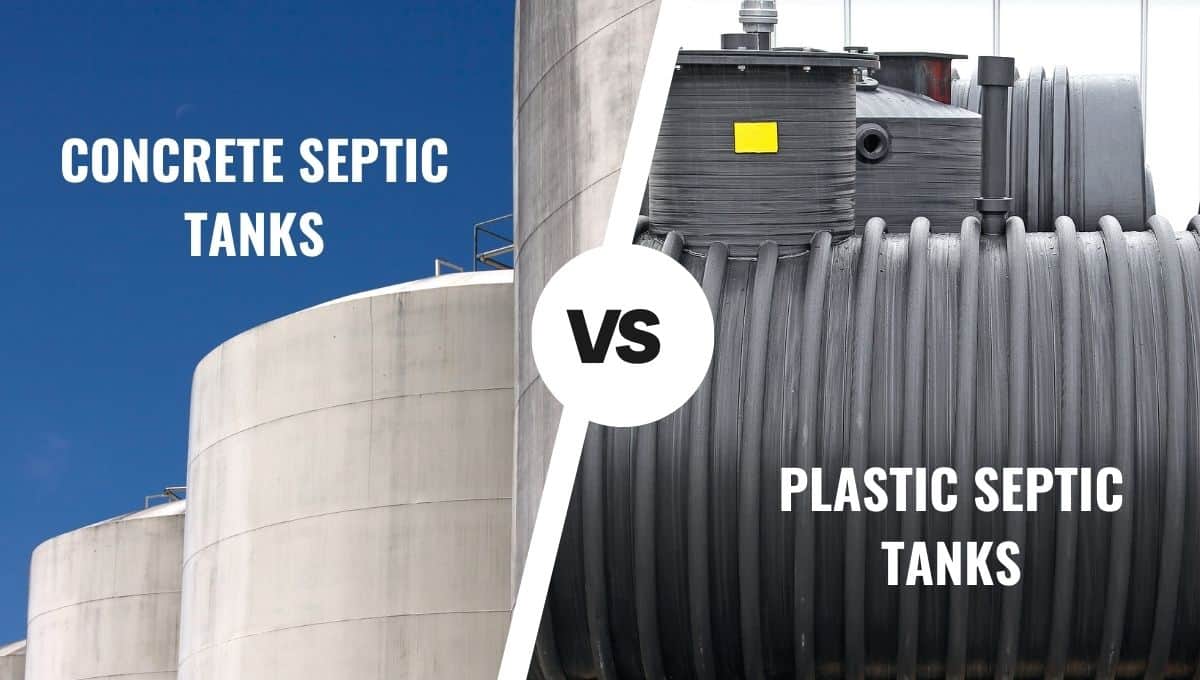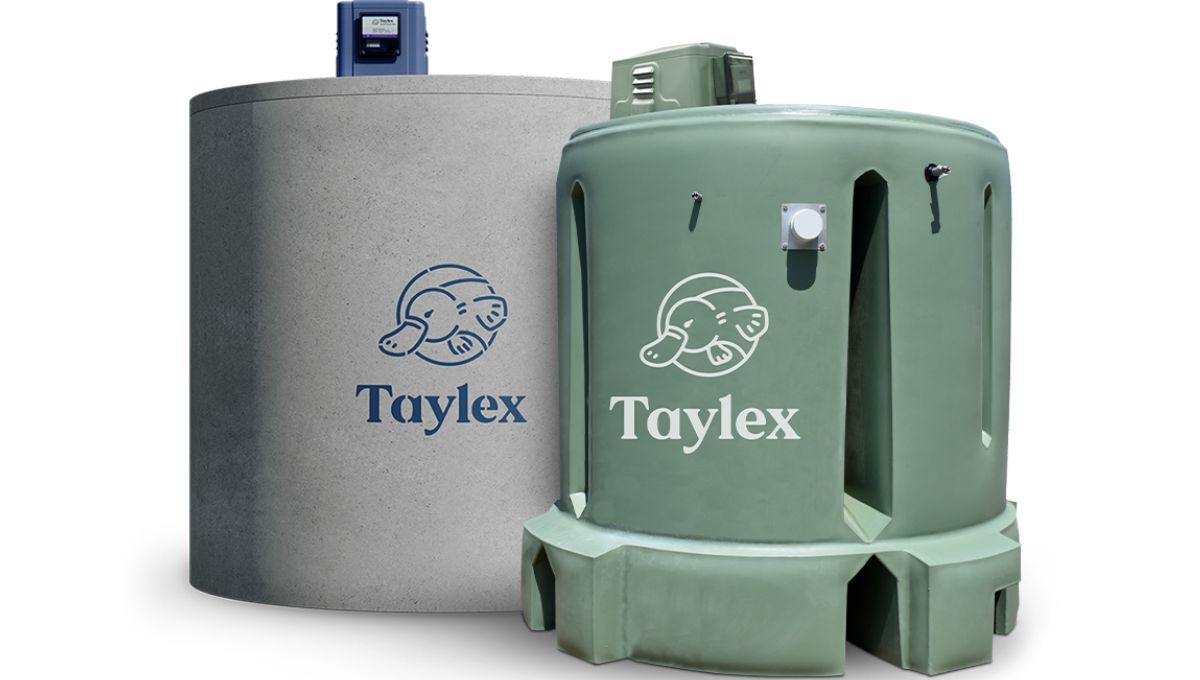
Need help deciding on concrete vs plastic septic tanks for your home? Choosing the right septic tank is important for effective wastewater management and environmental protection. A suitable septic tank system ensures compliance with regulations and prevents costly repairs and environmental hazards.
This guide will simplify your decision-making process by breaking down the pros and cons of concrete and plastic septic tanks. We’ll discuss factors like durability, lifespan, installation costs, and environmental impact to help you find the perfect match for your needs.
Importance of Choosing the Right Septic Tank
Selecting the ideal septic tank is not just about meeting legal requirements—it’s about ensuring a sustainable and efficient waste management system for your home. The right septic tank optimises your property’s functionality and environmental sustainability. Here are the key benefits :
- Enhanced System Efficiency: A correctly sized and properly installed septic tank maximises the effectiveness of your wastewater treatment, ensuring smooth operation with minimal disruptions.
- Reduced Maintenance Costs: The right tank minimises the likelihood of issues such as leaks or overflows, which can be costly and labour-intensive.
- Long-Term Savings: Although the initial investment might be higher for some tanks, selecting the right one translates into long-term savings by reducing the need for frequent repairs or replacements.
- Environmental Protection: A well-chosen tank prevents contamination of local water sources and soil, contributing to the overall health of your community’s natural environment.
- Property Value Preservation: A properly functioning septic system enhances your property’s marketability and value, assuring potential buyers of its safety and compliance.
Choosing a septic tank that aligns perfectly with your property’s requirements secures your investment and supports your commitment to environmental responsibility. Making the right choice today will bring significant benefits, ensuring peace of mind and reducing environmental impact for years.
Understanding Septic Tank Options
After recognizing the importance of selecting the right septic tank, learning about the specifics of the available options is essential. Each type of septic tank has distinct characteristics that can significantly impact its performance and suitability for your property. Understanding their characteristics, advantages, and drawbacks will help you make well-informed decisions about your wastewater treatment needs.
Plastic Septic Tanks (Poly Septic Tanks)
Plastic septic tanks, known for their light weight and ease of installation, are popular among homeowners. They offer quick and cost-effective setups, reducing labour expenses and time. These tanks are made from durable polyethylene, which provides excellent resistance to corrosion and is easier to handle than traditional materials.
Advantages
- Cost-Effective: Generally cheaper than concrete options.
- Lightweight: Simplifies installation with fewer labour requirements.
- Portable: Easy to relocate and position in various locations.
- Corrosion-Resistant: Immune to rust or water degradation.
- Flexible: Less likely to crack under pressure due to material flexibility.
- Hygienic: Easier to keep clean compared to concrete tanks.
- Pre-Assembled: Ready for quick and straightforward installation.
- Low Maintenance: Smooth surfaces make cleaning easier.
Disadvantages
- Less Durable: May deform under heavy soil or vehicular pressure.
- Environmentally Sensitive: Prone to ruptures or breaks due to soil vibrations and temperature changes.
- More Vulnerable: Susceptible to damage and warping.
- Frequent Maintenance: Requires more regular inspections and upkeep.
- Limited Lifespan: Often shorter than that of concrete tanks.
- Buoyancy Issues: Risk of shifting if not anchored properly.
- Regulatory Approval: Only permitted in some states due to varying regulations.
Concrete Septic Tanks
Concrete septic tanks are a time-tested option for those seeking strength and longevity. Made from precast concrete and reinforced with steel rebar, their durability and capacity to withstand heavy loads make them ideal for large properties or high-demand situations.
Advantages
- Durable & Long-Lasting: Can last up to 40 years with proper maintenance.
- Less Likely to Leak: Concrete tanks are less likely to leak than plastic, reducing inspection needs.
- Stable Underground Placement: Their heavy weight prevents floating, even under substantial soil or vehicle pressure.
- More Resistant to Freezing: Ideal for cold climates, concrete tanks are less likely to freeze compared to plastic tanks.
- High Effluent Capacity: Ideal for larger households or high-volume waste.
- Handles Heavy Loads: Capable of withstanding the pressure from heavy soil and vehicles without sustaining damage.
Disadvantages
- Heavy & Complex Installation: Requires machinery for placement, increasing installation complexity and cost.
- Prone to Cracking: Potential for leaks if not maintained.
- Corrosive Risks: Susceptible to chemical attack over time.
- Expensive Repairs: Repairing a damaged concrete tank can be difficult and costly.
Finding the Perfect Septic Tank for Your Home
Choosing the right septic tank involves considering various factors impacting its performance, longevity, and compatibility with your property. Below, we break down key considerations to help you decide between concrete and plastic septic tanks, ensuring you select a system that meets your needs.

Factors to Consider
1. Budget
The cost of septic tanks can vary significantly between concrete and plastic options. While plastic tanks generally have a lower initial purchase price and reduced installation costs, concrete tanks, though initially more expensive, may offer greater value over time due to their longevity and reduced maintenance needs. Evaluating your budget will help you determine which option is more cost-effective in the long run. For a comprehensive cost analysis, consider requesting a free quote.
2. Wastewater Volume
The amount of waste water your household produces daily should guide your choice of tank material. Concrete tanks typically have higher effluent capacities and are better suited for large households or those with high wastewater output. In contrast, plastic tanks are available in various sizes but may require more frequent emptying and maintenance if under heavy use.
3. Ease of Installation
Consider the installation process when choosing your tank. Plastic tanks are lighter and often more flexible to install, which can significantly reduce labour and equipment costs. On the other hand, concrete tanks are heavier and require more rigorous installation procedures, which might be a critical factor if access to your property is restricted.
4. Durability Needs
Durability is a major factor in selecting a septic tank. Concrete tanks are highly durable and resistant to various environmental factors, making them suitable for areas with high traffic or heavy soil. Plastic tanks, while durable in their own right, can be susceptible to damage from external pressures and may not last as long as their concrete counterparts without proper maintenance.
5. Soil and Site Conditions
The specific conditions of your site, such as soil type and water table level, can influence the performance of your septic tank. Plastic tanks, being lighter, might require additional anchoring in high-water table areas to prevent flotation. Due to their weight, concrete tanks naturally resist buoyancy and are typically more stable in varied soil conditions.
6. Long-Term Maintenance
Maintenance considerations are vital in your decision. Concrete tanks often require less frequent maintenance but can be more challenging and costly if issues arise. Plastic tanks are generally easier to install and maintain but might need more regular checks to ensure integrity, especially in environments with fluctuating temperatures and moisture levels.
7. Regulations and Permits
Local regulations and permits can dictate tank choice. Check with authorities on permissible tank types and applicable installation/maintenance rules. The Queensland Development Code (MP 4.2 and MP 4.3) requires features like mosquito-proof screens and lead-free materials to ensure safety. Regular inspections by local authorities are also necessary to verify compliance with these standards.
Free Septic Tank Consultation: Unsure which tank fits your needs? Contact Taylex for expert advice and a free installation quote. Let our team help you find the most efficient and cost-effective solution. Get in touch now to set up a successful wastewater system.
Plastic vs Concrete Tank: Making the Right Choice
Both concrete and plastic septic tanks have pros and cons. Plastic tanks are affordable and easier to install but can be fragile and susceptible to cracking if mishandled. On the other hand, concrete tanks, while more expensive, offer superior durability and longevity, making them ideal for larger properties. When deciding, it’s important to consider factors such as property size, soil type, and accessibility.
Consult with a local septic tank company for expert guidance on the most suitable option for your property, ensuring its long-term durability.
Taylex: Your Partner in Effective Wastewater Management
At Taylex, we have been delivering top-quality septic solutions tailored to your needs for over five decades! Our concrete tanks, crafted from single-piece moulds, offer unmatched durability and are designed to withstand diverse environmental conditions. They are ever ready to adapt to challenging terrain and soil conditions, ensuring reliable performance across diverse properties.
You can trust our sustainable and technologically advanced wastewater solutions. We’re here to help you make an informed choice that ensures long-term satisfaction and compliance.
Consult with our licensed specialists today! Get your free quote and personalised advice to secure a dependable wastewater system for your home.
Concrete vs Plastic Septic Tanks FAQs
Are plastic septic tanks good?
Yes! Plastic septic tanks are good due to their affordability, ease of installation, and corrosion resistance. Their flexibility makes them easier to install than concrete tanks and less prone to cracking. However, they are best suited for certain conditions due to their vulnerability to damage.
How much does a septic tank weigh?
Septic tank weight varies by material and size. Concrete tanks can weigh several tonnes, while plastic tanks are much lighter, often weighing less than 500 kilograms.
Is a concrete or plastic septic tank better?
The choice depends on your specific needs—concrete tanks are for durability and longevity, while plastic tanks are for cost efficiency and easier installation.
What kind of septic tank lasts the longest?
Concrete septic tanks generally have the longest lifespan, often lasting up to 40 years or more with proper maintenance. Although they can be more expensive and challenging to install, their durability and strong construction make them a worthwhile investment.
What is the life expectancy of a plastic septic tank?
The life expectancy of a plastic septic tank is about 30 years or a bit more with proper maintenance. Their lifespan depends on factors like soil conditions and usage.